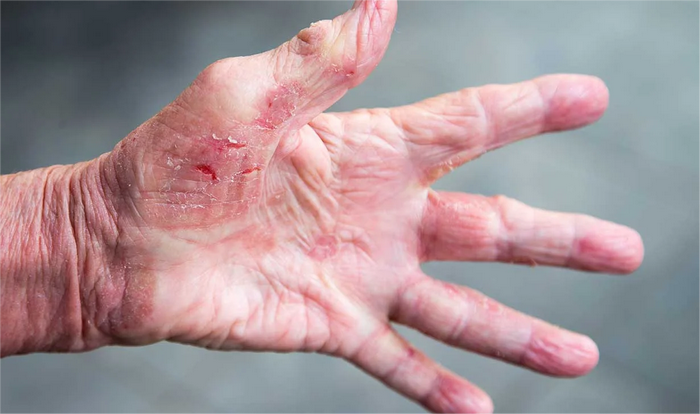Eczema, a chronic inflammatory skin condition, encompasses a spectrum of subtypes, each with its unique characteristics and triggers. Among these subtypes, vascular eczema stands out due to its distinctive appearance and underlying vascular involvement. Recognizing the signs and symptoms of vascular eczema is crucial for accurate diagnosis and effective management. In this article, we delve into the intricacies of vascular eczema, shedding light on its presentation, causes, and treatment modalities.
What is Vascular Eczema?
Vascular eczema, also known as stasis dermatitis or gravitational eczema, is a type of eczema primarily affecting the lower legs and ankles. Unlike other forms of eczema, vascular eczema is closely associated with impaired circulation in the lower extremities, leading to a distinct pattern of symptoms. It typically arises in individuals with underlying venous insufficiency or chronic venous hypertension, conditions characterized by inefficient blood flow from the legs back to the heart.
Symptoms of Vascular Eczema
The hallmark symptoms of vascular eczema manifest as a constellation of skin changes in the affected areas. These symptoms may include:
1. Erythema (Redness):
One of the initial signs of vascular eczema is the development of erythema or redness over the lower legs and ankles. This redness often appears in patches and may be accompanied by warmth and tenderness in the affected areas.
2. Edema (Swelling):
Due to impaired venous return, individuals with vascular eczema commonly experience swelling or edema in the lower extremities. This swelling tends to worsen with prolonged standing or sitting and may lead to discomfort and heaviness in the legs.
3. Pruritus (Itching):
Itching is a prevalent symptom of vascular eczema and can range from mild to severe. The urge to scratch affected areas can exacerbate inflammation and compromise the skin barrier, predisposing it to further damage and infection.
4. Hyperpigmentation:
Chronic inflammation and hemosiderin deposition secondary to venous congestion can result in skin discoloration or hyperpigmentation in the affected regions. This discoloration often presents as brownish patches and may persist even after other symptoms have resolved.
5. Excoriation and Crusting:
Continuous scratching due to pruritus can lead to excoriation and crusting of the skin, further compromising its integrity and barrier function. Secondary bacterial or fungal infections may also occur, exacerbating symptoms and necessitating prompt medical intervention.
Causes of Vascular Eczema
The underlying pathophysiology of vascular eczema revolves around venous insufficiency and chronic venous hypertension, which contribute to the development of skin changes characteristic of the condition. Several factors can predispose individuals to these venous abnormalities, including:
1. Venous Valve Dysfunction:
Healthy venous circulation relies on the proper functioning of one-way valves within the veins, which facilitate the unidirectional flow of blood back to the heart. Dysfunction or incompetence of these valves can impede venous return, leading to pooling of blood in the lower extremities and subsequent venous hypertension.
2. Deep Vein Thrombosis (DVT):
Acute or chronic DVT, characterized by the formation of blood clots within the deep veins of the legs, can disrupt normal venous flow and predispose individuals to venous insufficiency. The resulting venous congestion contributes to the development and exacerbation of vascular eczema symptoms.
3. Prolonged Standing or Sitting:
Occupation or lifestyle factors that involve prolonged periods of standing or sitting can increase venous pressure in the lower limbs, exacerbating venous insufficiency and promoting the development of vascular eczema.
4. Obesity:
Excess body weight exerts additional pressure on the venous system, impeding blood flow and predisposing individuals to venous insufficiency and related skin changes.
5. Congestive Heart Failure (CHF):
CHF can lead to systemic venous congestion, resulting in elevated venous pressure in the lower extremities and contributing to the development of vascular eczema.
Treatment of Vascular Eczema
Effective management of vascular eczema revolves around addressing both the underlying venous insufficiency and the associated skin changes. A multimodal approach incorporating lifestyle modifications, skincare practices, and medical interventions is typically employed to alleviate symptoms and improve overall skin health. Key treatment modalities include:
1. Compression Therapy:
Graduated compression stockings or bandages are essential components of vascular eczema management, as they help alleviate venous hypertension and promote venous return from the lower extremities. Properly fitted compression garments exert external pressure on the veins, reducing swelling and edema while preventing the progression of skin changes.
2. Elevation:
Elevating the legs above heart level whenever possible can facilitate venous drainage and reduce lower limb edema. Incorporating regular leg elevation into daily routines, especially during periods of prolonged sitting or standing, can help alleviate symptoms of vascular eczema.
3. Topical Emollients and Steroids:
Moisturizing emollients and topical corticosteroids play a crucial role in managing the inflammatory component of vascular eczema. Emollients help hydrate and nourish the skin, restoring its natural barrier function and reducing moisture loss. Topical corticosteroids effectively alleviate pruritus and inflammation, promoting symptom relief and facilitating skin healing.
4. Wound Care:
For individuals with advanced vascular eczema complicated by skin breakdown or ulceration, meticulous wound care is essential to prevent infection and promote healing. This may involve the use of non-adherent dressings, topical antiseptics, and advanced wound care products under the guidance of healthcare professionals.
5. Medical Interventions:
In severe cases of vascular eczema refractory to conservative measures, medical interventions such as sclerotherapy, laser therapy, or surgical procedures may be considered to address underlying venous pathology and improve symptoms.
Conclusion
Vascular eczema represents a distinct subtype of eczema characterized by its association with venous insufficiency and chronic venous hypertension. Recognizing the unique clinical features of vascular eczema is essential for accurate diagnosis and effective management. By addressing both the underlying vascular abnormalities and the associated skin changes, healthcare providers can help individuals with vascular eczema achieve symptom relief and improve their quality of life. A comprehensive treatment approach encompassing lifestyle modifications, skincare practices, and medical interventions forms the cornerstone of vascular eczema management, empowering patients to take control of their skin health and well-being.
























